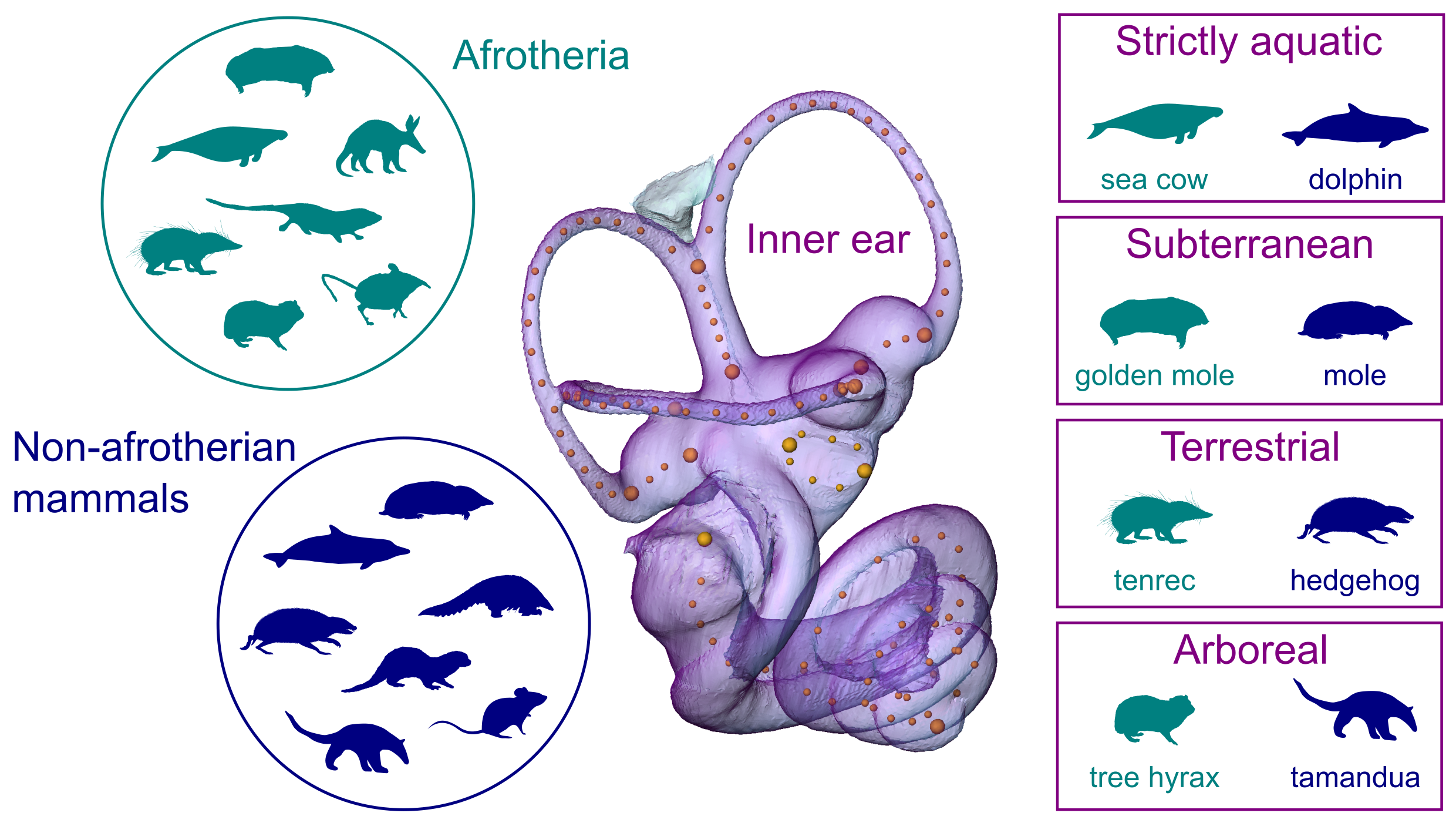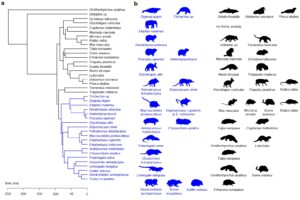HEAS members publish new study on how mammals with distant evolutionary ties but similar ecological roles evolved comparable inner ear shapes.
More On Article
- New Publication by HEAS Member Offers New Insights into Ancient Roman Settlement Patterns in Austria
- Home is where my villa is: a machine learning-based predictive suitability map for Roman features in Northern Noricum (ca. 50–500 CE/Lower Austria/AUT)
- HEAS Keynote with Necmi Karul Takes Place in Vienna
- HEAS Members Publish Nature Communications Article with HEAS Speaker
- Ancient DNA reveals diverse community organizations in the 5th millennium BCE Carpathian Basin

A new study by HEAS members Nicole Grunstra, Philipp Mitteroecker and Anne Le Maître, published in Nature Communications, showed clear evidence of convergent evolution over phylogenetic signal in the inner ear of mammals. The shape of the bony labyrinth – the osseous moulding of the inner ear – remains intensively studied in humans and extinct hominins in order to study adaptation and phylogenetic relationships. This macroevolutionary study of different evolutionary signals in the mammalian inner ear provides a relevant evolutionary context for human inner ear variation.




